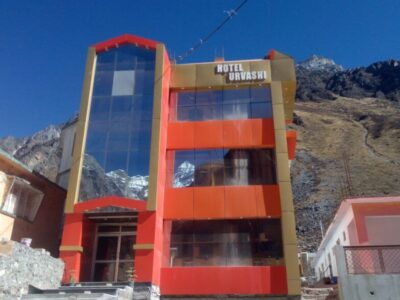Badrinath
Introduction:
Nestled in the Garhwal Himalayas at an elevation of 3,133 meters (10,279 feet), Badrinath is one of Hinduism's most revered pilgrimage sites. As part of the sacred Char Dham circuit, this ancient temple town attracts thousands of devotees annually who come to seek blessings at the Badrinarayan Temple dedicated to Lord Vishnu. The temple sits majestically along the banks of the Alaknanda River, surrounded by the twin peaks of Nar and Narayan mountains, creating a spiritual atmosphere that has drawn pilgrims for centuries.
The Journey to Badrinath:
The pilgrimage to Badrinath typically begins from Haridwar or Rishikesh, with stops at important spiritual sites like Devprayag and Joshimath along the way. The final approach to Badrinath winds through breathtaking Himalayan landscapes, passing through the picturesque town of Mana - India's last village before the Tibetan border. The road journey itself is considered part of the spiritual experience, with each turn revealing more spectacular mountain vistas.
The Sacred Temple:
The Badrinarayan Temple, with its colourful facade and gold-plated roof, stands as the centrepiece of this holy town. According to tradition, the temple was established by Adi Shankaracharya in the 8th century, though the current structure has been rebuilt several times due to avalanches and earthquakes. The black stone idol of Lord Badrinarayan (Vishnu in meditation posture) is the main deity, along with smaller shrines dedicated to Lakshmi, Narada, and other Hindu gods.
Spiritual Significance:
Badrinath holds immense importance in Hindu scriptures. It's believed to be one of the 108 Divya Desams - sacred Vishnu temples mentioned in Tamil scriptures. The site is also associated with several legends, including being the place where Vishnu meditated for thousands of years under the Badri tree (from which the name originates). The nearby Tapt Kund, a natural hot spring, is where pilgrims traditionally bathe before entering the temple.
Natural Wonders:
The region around Badrinath is blessed with extraordinary natural beauty. The Neelkanth peak (6,597m) towers over the temple, its snow-covered slopes gleaming in the sunlight. The origin of the Alaknanda River at Satopanth Glacier and the spectacular Vasudhara Falls near Mana village add to the area's natural splendor. The valley comes alive with colorful rhododendrons in spring, creating a vibrant contrast against the white snow.
Pilgrimage Season:
The temple remains open for about six months each year (April/May to October/November), depending on weather conditions. The opening ceremony (known as Badri-Kedar Utsav) is a grand celebration, while the closing ceremony sees the deity's idol being carried down to Joshimath for winter worship. These rituals are performed with great devotion and attract large crowds.
Modern Amenities:
Badrinath has kept its ancient holy atmosphere while adding modern facilities for pilgrims. Visitors can find many guest houses, simple dharamshalas (pilgrim rest houses), and eateries for their stay. The government has built better roads and basic amenities while protecting the area's natural environment. For those who can't travel by road, helicopter services are now available too. These improvements help make the pilgrimage easier without disturbing Badrinath's sacred character and beautiful mountain surroundings.
Conservation Efforts:
Badrinath is located in the sensitive Himalayan region, so special care is taken to protect its environment. Several steps have been put in place to keep the area clean and beautiful. There are proper waste disposal systems, bans on plastic items, and strict rules about building construction. These efforts help preserve both the spiritual importance and natural wonders of this holy place. Visitors are requested to be responsible - by avoiding littering, saying no to plastic, and following all environmental guidelines. When pilgrims take small steps to protect Badrinath, they help maintain its sacred atmosphere and stunning mountain landscapes for future generations to experience.

